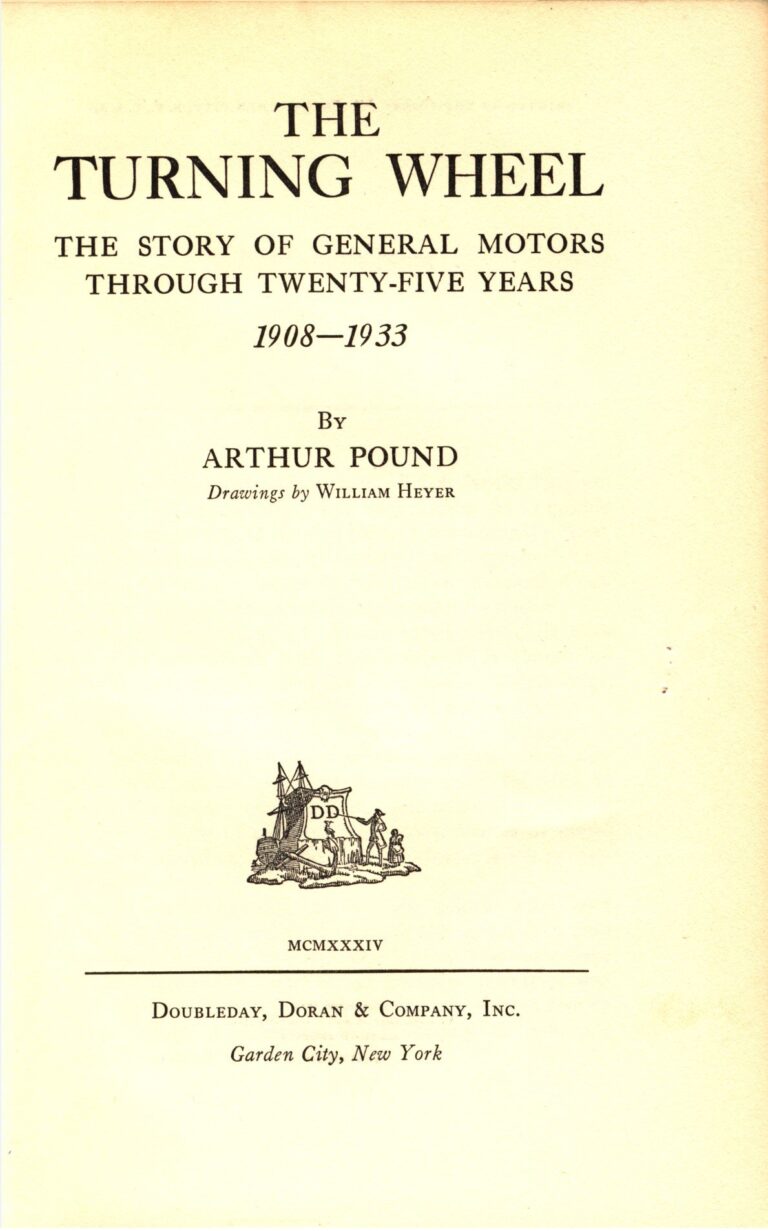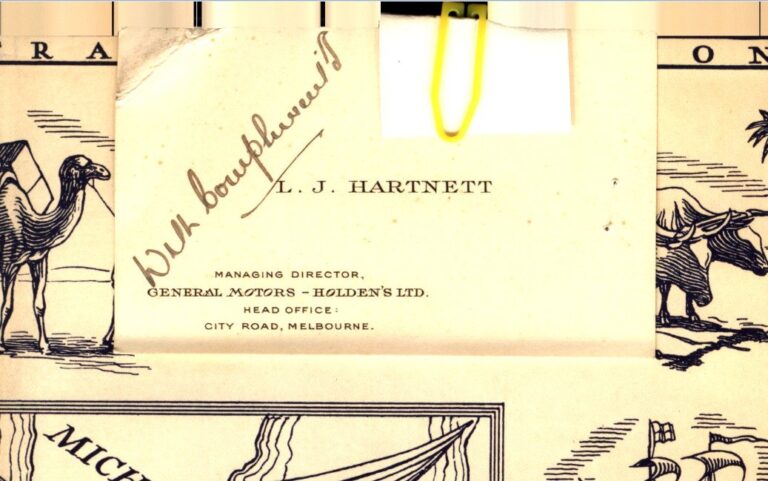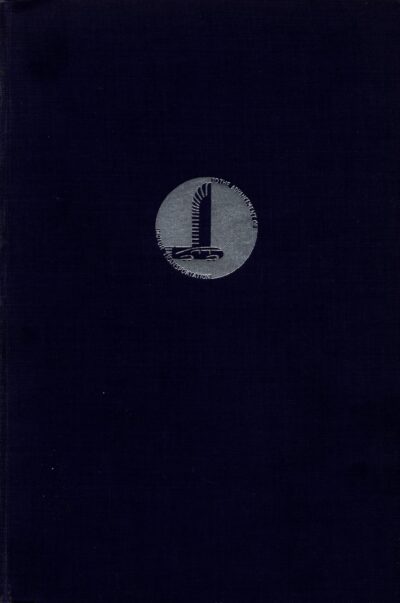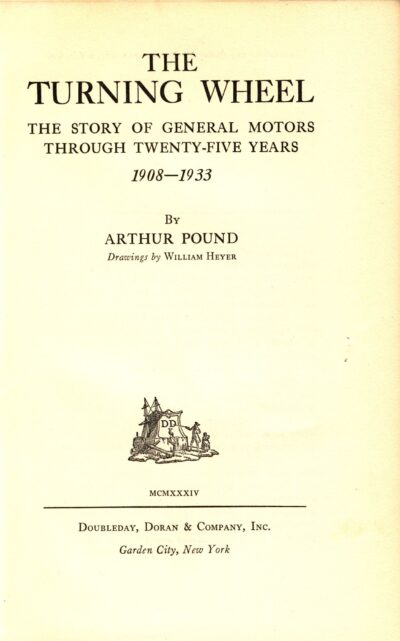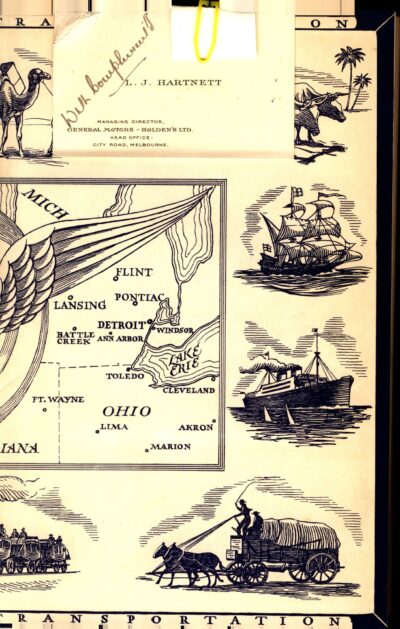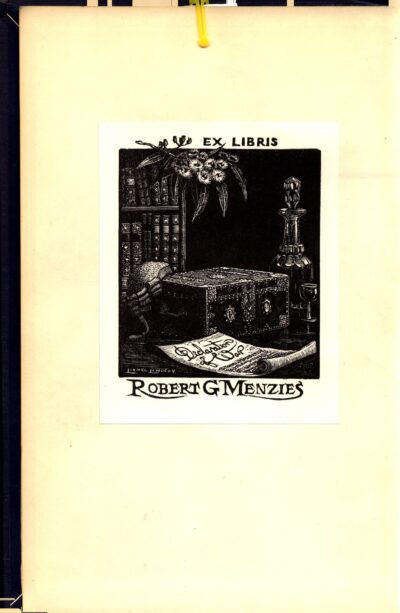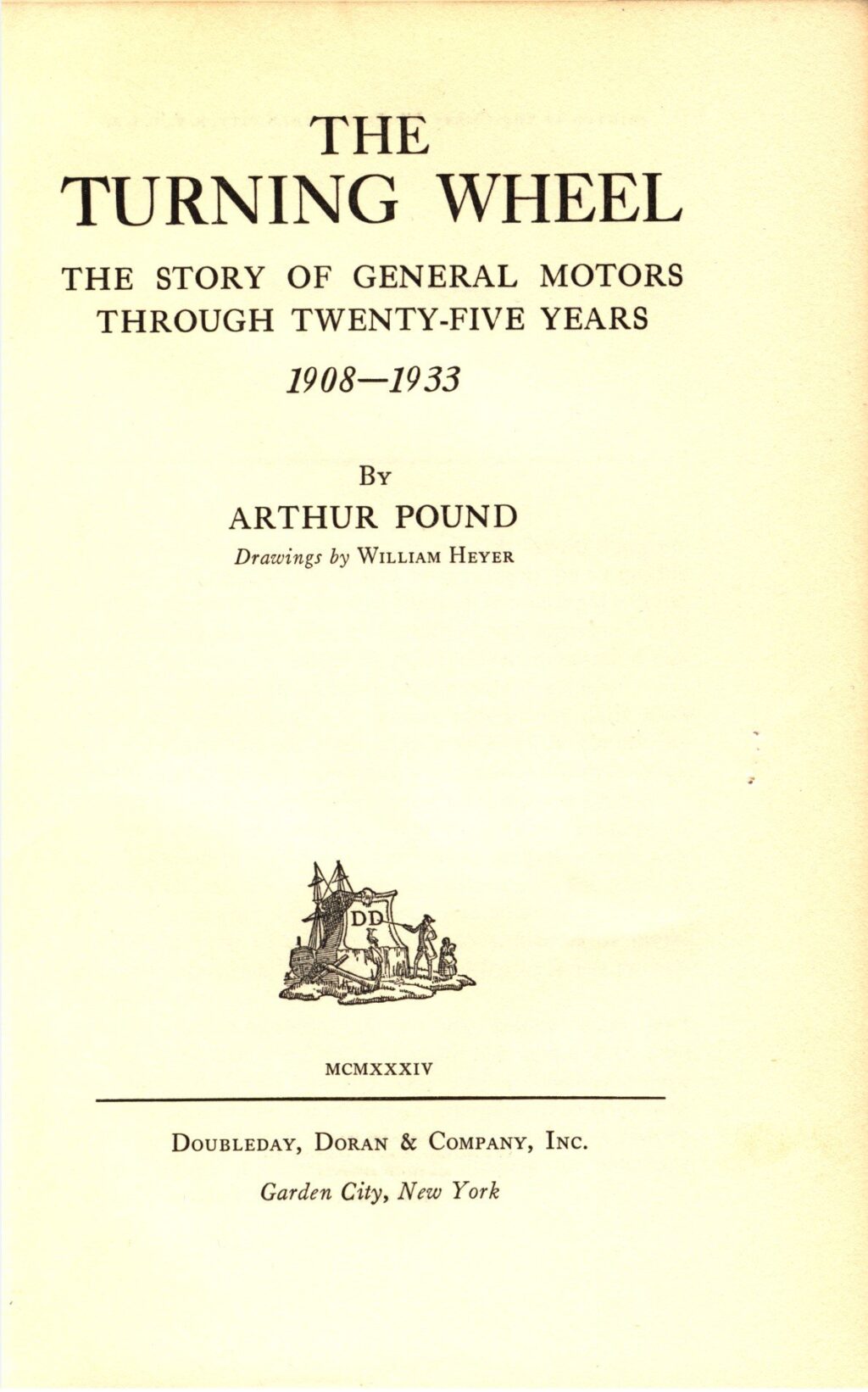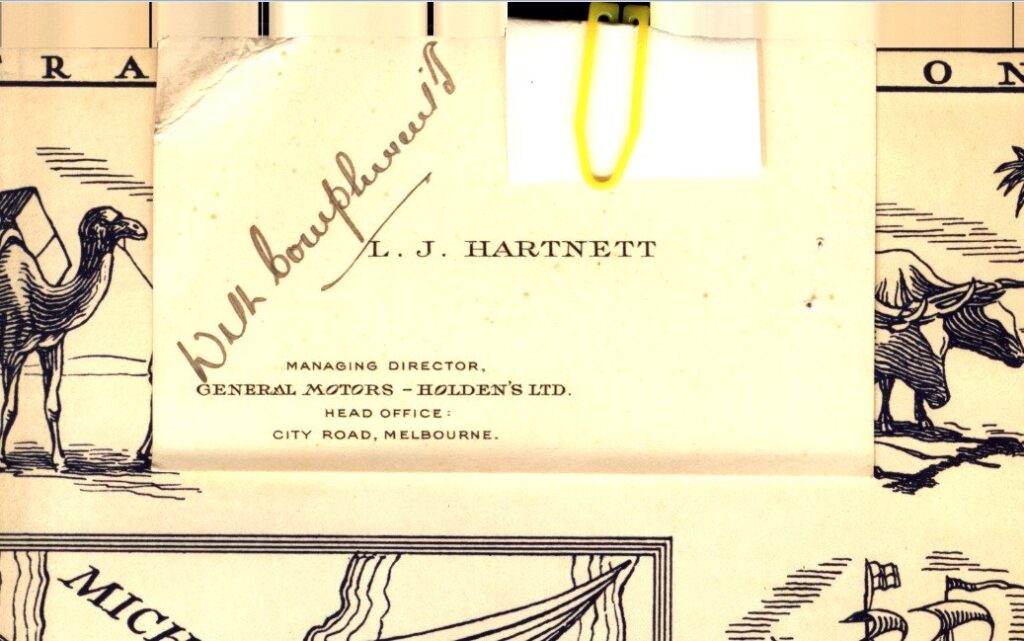Arthur Pound, The Turning Wheel: The Story of General Motors Through Twenty-Five Years 1908-1933 (1934)
In 1948 the Holden was famously launched as ‘the Australian car’, however the design chosen was ultimately a foreign one. There had been plans for a fully Australian car put forward by Holden’s General Manager Laurence Hartnett, but he was ultimately removed from his post for obstinately insisting on having a car ‘designed within Australia…to suit Australian conditions’.
That same Hartnett sent Menzies his copy of The Turning Wheel, and the book is an important reminder that the story of Holden by no means began in 1948. Indeed, the company had started out in the 1850s as a South Australian saddlery business which in 1908 started applying its skills to car upholstery, and from there ended up expanding to deal with motor bodies. In 1924 the American company General Motors signed an exclusivity deal with Holden to produce bodies exclusively for its vehicles, and in 1931 General Motors obtained a large stake in Holden which was re-founded as General Motors Holden (GMH).
The English born Hartnett had worked for the GM corporation in both Britain and Sweden, and in 1934 he was sent to Australia to take charge of the new entity. He quickly fell in love with his adoptive home, becoming a fiercely patriotic Australian – as later events would prove. In May 1939 Hartnett was already in talks with the Menzies Government for how to realise the dream of a fully Australian-built car. Then in June 1939 he was outspoken on the need for Australia to lift its efforts at preparing for the coming global conflict, and even though this was a direct criticism of the Menzies Government, when war broke out Menzies immediately recruited Hartnett to take on an important role as Director of Ordinance Production.
In 1940, Menzies personally opened Holden’s new motor plant in Pagewood, NSW, exalting that the:
‘Development of Australian economic and industrial forces in time of war will lay the foundation for post-war rehabilitation… War is no time for industrial paralysis. It is really a splendid thing that although we are at war – and we may soon be more conscious of the horrors of war than we are today – this great plant should have been built. Our economic resources must be developed for the nation with the greatest economic forces will win the war.’
Menzies was correct in his view that wartime manufacturing would form an important basis for the post-war economy, even though he temporarily lost the prime ministership and was therefore not able to take the credit when the first fully Australian-built Holden rolled off of the assembly line. Nevertheless, the car would become an icon of the 1950s, with Menzian prosperity allowing far more Australians to get their hands on one than would otherwise be the case.
As for Hartnett, he responded to Menzies’s speech by characteristically bragging that the plant had not only been built by Australians, but also designed by Australians. When he was removed as General Manager, the GM corporation offered him a new position in America, but he preferred to resign from the company to continue to live in the Great Southern Land. Throughout the 1950s he continued to push for the manufacture of his Australian car, to be known as ‘the Hartnett’, however only 70-odd would ever be built. He eventually became a critic of Menzies, who refused to provide the level of government intervention in the market which would have been required to make the Hartnett a success.
However this tension proved temporary as, quite ironically, in the 1960s Hartnett would turn over a new leaf by pioneering the import of Japanese cars, under licence from the Nissan Motor Company. This was a direct product of the strong economic relationship with Japan which the Menzies Government had fostered through its landmark 1957 Commerce Agreement.
You might also like...
Sign up to our newsletter
Sign up for our monthly newsletter to hear the latest news and receive information about upcoming events.

